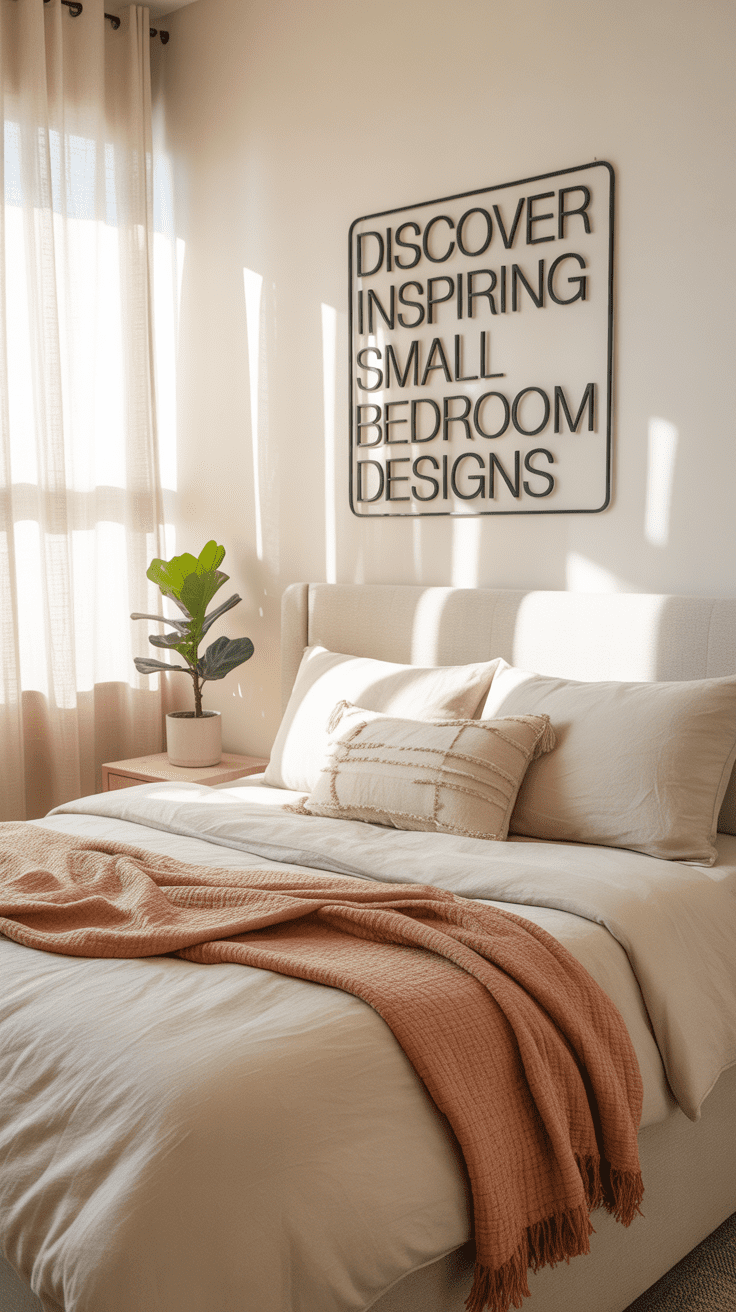
Welcome to Your Den of Tranquility: Why Small Bedroom Design Matters Now
In our increasingly compact living environments, the art of transforming small bedrooms into functional, stylish sanctuaries holds more significance than ever before. Whether you’re a city dweller with limited space or simply wish to create a cozy guest room, small bedroom designs that smartly merge functionality with flair have become essential. Today, we’ll explore the most creative and efficient ways to decorate smaller sleeping spaces, focusing on affordable solutions and the latest trends for the upcoming years.
Start with a Statement: Finding Your Focal Point
First, let’s talk about the starting line—identifying a focal point in your small bedroom. This could be a striking headboard, an eye-catching piece of art, or a bold upholstered bed. Companies like IKEA offer stylish bed frames like the MALM ($179) which doubles as storage—an invaluable feature in small spaces. The idea is to draw the eye to a central part of the room, creating a visual anchor. Futurist decor experts on Pinterest Predicts forecast that multifunctional pieces will take center stage as we head into 2026.
That said, balance is crucial! Avoid cluttering the focal point with too many elements. Instead, let it breathe. This leads us to the next essential step, ensuring your room’s layout supports this key piece rather than obscures it.
Layouts that Shine: Arranging for Maximum Impact
Once you’ve pinpointed the focal point, it’s time to arrange your space. Opt for beds that can serve dual purposes, such as loft beds or Murphy beds. According to a trending TikTok hack by @DIYjoy, lifting beds allow for functional areas like a study nook beneath. If you’re opting for a traditional floor bed, place it against two walls to free up walking space.
Mirrors are your secret weapon. They reflect light and space, effectively doubling the perception of your room’s size. Consider companies like West Elm, offering wall mirrors from $99 that can be tactically positioned opposite windows to maximize natural light.
A real-life example can be seen in the small Soho apartments that use Crittal-style glass dividers to segment rooms without visually cutting them in half. This New York trend is particularly prevalent on sites like Apartment Therapy, illustrating how the clever use of glass brings openness to tight quarters.
The Power of Light: Illuminating Your Small Space
Good lighting transforms small rooms. Layer your lighting to avoid flatness—think ambient lights, task lights, and accent lights. Retailers like Lamps Plus offer chic sconces starting at $49 that save on floor space and add elegance. Consider a minimalist approach with overhead LED lights that blend seamlessly into the ceiling while providing bright, even illumination.
The use of natural light should never be underestimated. Experts suggest maximizing window exposure by opting for wide, unlined curtains from brands like Target (priced at around $20) that let in light while maintaining privacy.
Textures and Colors: The Key to Cozy
Now, let’s dive into color theory, where mood meets practicality. For 2026, color palettes forecasted by Statista include earthy tones—muted terracottas, olive greens, and creamy whites—which not only create a calming effect but also promote light diffusion.
Textures play a pivotal role in small bedrooms. Incorporate a mix of throws, rugs, and curtains to add depth. Companies like H&M Home offer affordable decor textiles with luxurious textures, such as a chunky knit throw ($35) that can add coziness without crowding the room.
Common Pitfalls and How to Avoid Them
While designing small bedrooms, it’s easy to fall into traps that make spaces feel tighter. The first misstep could be choosing oversized furniture. Opt for sleek, compact options like CB2’s sleek acrylic furnishings—we’re talking transparent pieces that fool the eye into thinking there’s more room.
Over-accessorizing can also lead to a cluttered feel. Limit accessories and rotate them seasonally for variety without the cramping.
Trend Forecasts: Looking Ahead in Design
What can we expect for 2026 and beyond? Sustainability is key. Eco-friendly designs and materials are taking over the decor landscape. According to a recent study by Houzz, more consumers will lean towards sustainable wood from brands like Holdfast or eco-conscious decor from The Citizenry.
Additionally, customization will reign supreme. The move towards tailor-made furniture pieces that can fit perfectly in your space is gaining traction. Companies like Joybird offer custom solutions at competitive prices, allowing for personal expression even in compact confines.
Personalizing Your Sanctuary: Bringing It All Together
At the end of the day, your room should reflect your personality. Whether through a gallery wall of personal photographs or a bespoke wardrobe, choose pieces that speak to who you are. As you implement these insights, remember the ultimate goal: creating an inviting haven that offers peace despite its petite dimensions.
Remember to keep room for change, as your lifestyle and preferences evolve. Trends may guide you, but personal touches are timeless. Let these ideas inspire your next small bedroom makeover, creating a space that’s both chic and cleverly designed.
